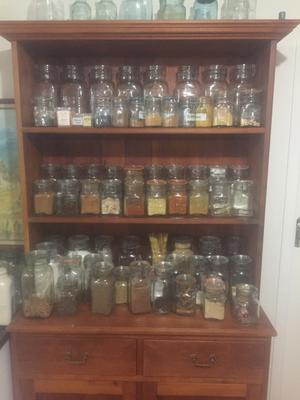This is a badge bit (BB) that is part of the
PEP curriculum. Completing this BB is part of getting the iron badge in
Gardening.
The average bite of food in the US travels 1500 miles to get to your pie hole. Growing substantial amounts of food yourself contributes greatly to making the world a better place. Let's do some serious growing! No inputs from more than 500 feet away are allowed except for seeds.


We're kind of aiming for something like in this video, but better!
Urban Agroecoloy: 6,000 lbs of food on 1/10th acre - Urban Homestead - Urban Permaculture
From the video description:
"Over 6,000 pounds of food per year, on 1/10 acre located just 15 minutes from downtown Los Angeles. The Dervaes family grows over 400 species of plants, 4,300 pounds of vegetable food, 900 chicken and 1,000 duck eggs, 25 lbs of honey, plus seasonal fruits throughout the year."
To put it in perspective, there are 10,000 calories is in:
o 35 pounds of potatoes
o 10 pounds of prunes
o 40 quarts of salsa
o 6 pounds of dried strawberries
o 55 pounds of onions
o 50 pounds of winter squash
o 30 pounds of sunchokes
o 7 pounds of field corn or rye or most grains
o 7 pounds of dried black beans
o 4 pounds of sunflower seeds
To complete this BB, the minimum requirements are:
- grow, harvest and
use 30 or more species (except in cases where species are quite different as in the brassica family) totaling 4,000,000 calories
- "use" can include drying, canning, root cellaring, freezing, fermenting, eating, selling, giving, etc.
- perennials, biennials and annuals are fine but foraging is not
- can not be used for animal feed
- all systems are polyculture systems
- all plants' roots must be in contact with at least 3 different species
- no more than 30% of an area is one type of plant, preferably 10%
- at least half the food is grown without irrigation
- irrigation from a watering can during seed establishment is acceptable
- no inputs from more than 500 feet away (tomato starts from the big box store aren't allowed) except for seeds
- plants must include: raspberries, rhubarb, melon, summer squash, 3 sisters, tomatoes, peppers, onions, potatoes, garlic, peas, broccoli, carrots, lettuce, cucumbers, daikon radish, sunchokes, strawberries, rye, stinging nettles, sunflower seeds, horseradish, sweet clover, comfrey, crocus, daffodils, grape, chives, parsley
To document your completion of the BB, provide proof of the following as pics or video (less than two minutes):
- each of the 30+ species of food stored or at harvest (whichever is most applicable to prove you did it).
- detail the weight of each species and how many calories it represented
- pictures of the polyculture systems
- pictures showing at least half of the food growing without irrigation
Clarifications:
- Seed potatoes (or tubers or slips) are allowed provided that you show at least five times more final produce than the “seed.”
- All food needs to be grown in the same calendar year.










